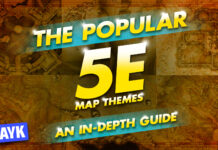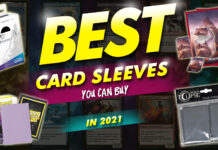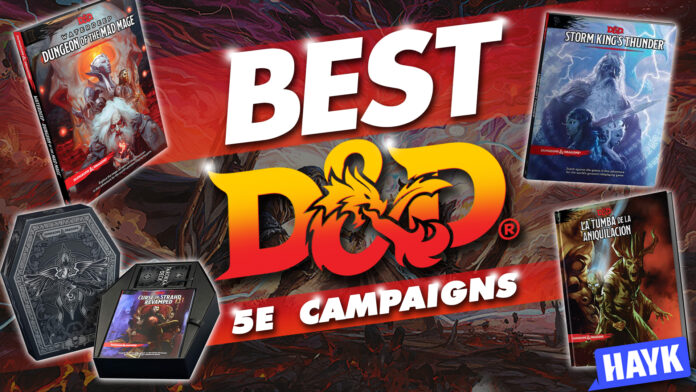
Choosing the best D&D 5E campaign to run is like picking your favorite politician. Each campaign offers lots of promises, yet you have to live with some trade-offs.
There’s no such thing as a perfect 5E campaign as there are different types of D&D campaigns for different adventurers. Rather, you must have a checklist of popular 5E campaigns matching the preferences of your chosen players. At the moment, the hottest DnD campaign type is the Elden Ring DnD campaign.
In this article, you’ll learn about the hottest D&D 5E campaigns, along with some useful sourcebooks. Additionally, you’ll know about some essential tips to help you become a better DM.
Contents of this Page
Best D&D 5E Campaigns – An Overview
Out of The Abyss
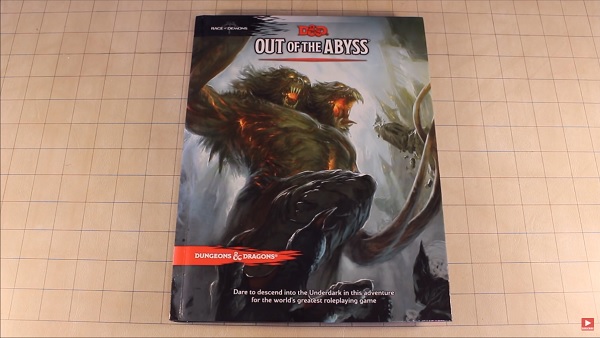
Rating
DM Complexity: 4.5/5
Player Difficulty: 4/5
Artwork: 4/5
Affordability: 4/5
Features
Book Type: Hardcover | Genre: Sandbox RPG | Publisher: Wizards of the Coast | Weight: 31 ounces
Out of the Abyss (OOTA) is an adventure that will put players in a miserable situation right from the very beginning. The players start out imprisoned with other NPCs in the shadowy labyrinth of the Underdark. Most of these NPCs will attempt to help players, but others are just plain traitors. If you think Out of the Abyss is conflict-driven, you are 100% correct.
Out of the Abyss is not an easy campaign to run. There are lots of details to juggle, starting from multiple NPCs’ ideals to the agendas of demon lords. Some quests are also too long that the players might lose interest halfway. OOTA’s poor chapter design can also take its toll on any group, so the DM must exert mental effort to fix specific quest lines.
You can run OOTA easier by combining real-time narration and quick summaries. While narrating summaries of events, always ask your players about their decisions. It’s like having a meeting about a certain situation where decisions take center stage. If you believe that an event is short, then you may let it commence in real-time.
But all known problems of OOTA will fall by the wayside if players learn that they can banish demons and kill evil beings. Let your players feel the essence of survival and power in the Underdark!
Storm King’s Thunder
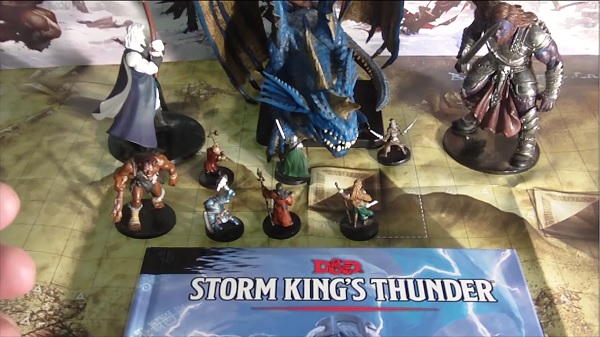
Rating
DM Complexity: 4/5
Player Difficulty: 4/5
Artwork: 4.5/5
Affordability: 4/5
Features
Book Type: Hardcover | Genre: Sandbox RPG | Publisher: Wizards of the Coast | Weight: 32 ounces
Considered as an adventure and sourcebook rolled into one, Storm King’s Thunder (SKT) is ready to offer an epic experience to all players. Despite the campaign’s slow start, Storm King’s Thunder has a fair number of conflicts to keep players engaged.
Progression in SKT is almost chronological. After discovering the treachery of giants, the players must visit different locations to find strong allies and stop further destruction. While traveling, the players can even partake in downtime activities to gain extra items or money.
Storm King’s Thunder suffers from one of the common problems of a sandbox adventure: aimlessness. Even if SKT has numerous locations that players can explore outside of the primary quest, the adventure might still feel like a slog. To prevent this from happening, you must create ‘trigger points’ that can possibly lead to huge encounters. Perhaps you can ignite a violent conflict between a caste of giants and a new faction of giant slayers.
Another problem of Storm King’s Thunder is the disconnection between events. The first chapter, for example, doesn’t fully connect to the second chapter. The DM must put in extra work to highlight the disastrous effects of the giants’ rampaging. More importantly, the DM must create a strong hook to let the players care about the future of the Savage Frontier.
Beginner DMs who want to run SKT should follow the milestone leveling system. While XP leveling is fun, it’s somehow tedious to keep track of everything. Through milestones, players will know if they’re progressing clearly.
Dungeon of The Mad Mage
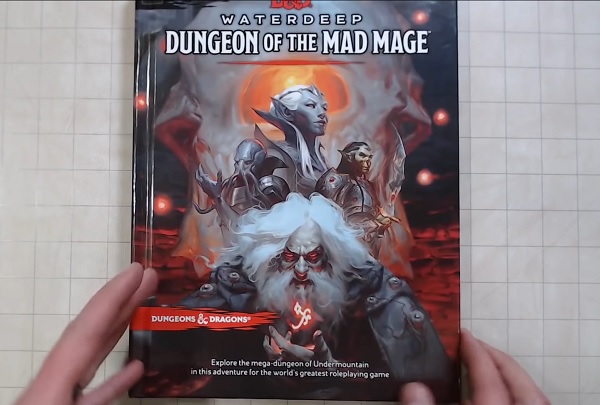
Rating
DM Complexity: 4.5/5
Player Difficulty: 4/5
Artwork: 4.5/5
Affordability: 4/5
Features
Book Type: Hardcover | Genre: Dungeon crawl, RPG | Publisher: Wizards of the Coast | Weight: 38 ounces
Dungeon of the Mad Mage (DOTMM) is not just a campaign – it is a massive collection of dungeon maps, encounter ideas, enemies, and story options. A typical Dungeon of the Mad Mage campaign can last for more than three years, depending on session speed and available quests. The campaign’s villain is also crazy, allowing deeper character development and the formation of strange goals.
The Undermountain is the iconic mega-dungeon where DOTMM is set. Basically, the Undermountain is the Mad Mage’s dungeon. Each floor has a storyline that players can follow in a sandbox manner. The fate of the NPCs on every floor depends on the players’ decisions. Any decision is also enough to rouse the anger or appreciation of the Mad Mage.
Faction politics is a big thing in Dungeon of the Mad Mage. The players will encounter popular factions like Xanathar Guild, Lord’s Alliance, and the Zhentarim Network in the adventure. You can also include homebrew factions to stir deeper conflicts that will put your players on edge.
Since DOTMM is big, it can be a real drag for players. You can limit DOTMM’s complexity by reducing floors and letting players explore the rest of Waterdeep and Faerun. The downside of this approach is the additional time needed to finish your campaign.
Motivation is also a real bummer in Dungeon of the Mad Mage. Most of the time, players will prefer to explore the Sword Coast instead of fighting through the Undermountain’s dungeon floors. Even the temptation of riches is no match for the bountiful locations that Faerun can offer.
To craft strong motivations, you should analyze the players’ backstories. Maybe the Warlock’s patron needs something recovered or destroyed in the 20th floor of Undermountain. Or perhaps the Paladin’s god assigned the difficult mission of destroying Halaster Blackcloak once and for all. Consider the backstories as keys to building effective adventure hooks.
Tomb of Annihilation
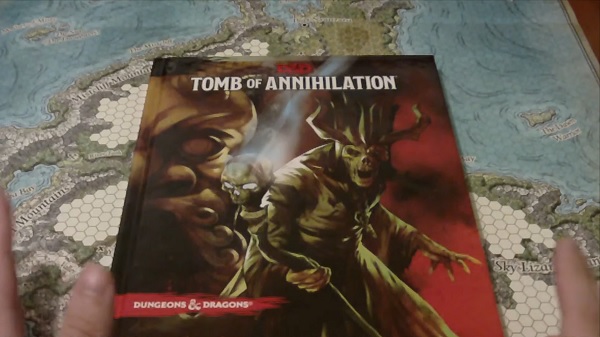
Rating
DM Complexity: 4.5/5
Player Difficulty: 4.9/5
Artwork: 4/5
Affordability: 4/5
Features
Book Type: Hardcover | Genre: Hexcrawl, RPG | Publisher: Wizards of the Coast | Weight: 35 ounces
Many players and DMs believe that Tomb of Annihilation (TOA) is a great adventure that can push anyone to the limits. Right at the start, players must work against the clock to undo a death curse ravaging the entire world. Players can find the answer in the tropical land of Chult, where death and disease await.
While TOA offers many chances for roleplaying, it shines in the aspect of hexcrawl. For starters, hexcrawl is the process where players travel from one hex to another. A battle map usually represents dozens of hexes, and traveling between hexes takes one or two days. As a creative DM, you must prepare an interesting hexcrawl map for your players. Don’t hesitate to make changes as you see fit, especially if you want to make the adventure easier.
Tomb of Annihilation is a meat grinder or a difficult adventure for most types of players. While playing TOA, players might encounter some deadly encounters that can result into multiple character deaths. Some of the major threats in TOA are undead, vicious dinosaurs, goblins, constrictors, Yuan-tis (snake people), traps, and diseases.
DM fiat is the general creative effort exerted by a DM. In Tomb of Annihilation, many quests or plotlines need a smooth flow of DM fiat to make sense. Some encounters feel mechanical as if they were placed in specific locations to induce danger. You probably need to add or remove some areas while scaling the balance between risk and rewards.
Curse of Strahd
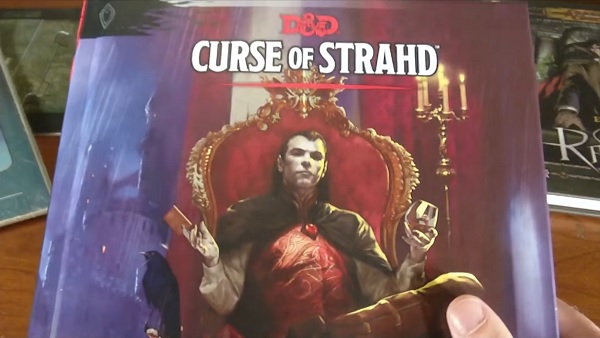
Rating
DM Complexity: 4/5
Player Difficulty: 4/5
Artwork: 3.9/5
Affordability: 4/5
Features
Book Type: Hardcover | Genre: Horror, RPG | Publisher: Wizards of the Coast | Weight: 34 ounces
Curse of Strahd (COS) is the grittiest campaign in D&D 5E right now. It has the bells and whistles of a traditional horror adventure, enhanced further by deep character backstories and drama. Aside from being a pure horror campaign, COS is flexible enough to work with other story elements like humor, intrigue, and tactical planning.
One of the pure strengths of Curse of Strahd is the enigmatic appeal of the antagonist, Count Strahd Von Zarovich. Imprisoned because of his greed and vile acts, Strahd must earn his freedom by turning the love of his life into a vampire or by finding a worthy successor. While Strahd is working towards his goals, the players must find a way to kill him and free the land from his rule.
DMing Curse of Strahd is not an easy task. As a DM, you must balance out Strahd’s innate longing for a lost love and the desire to kill or punish players. Strahd is not like a chromatic dragon focused on destruction or greed. COS also has many areas for roleplay, so the DM must know all of the NPCs properly.
The artwork of Curse of Strahd is acceptable but not appealing. In this campaign, you’d encounter more text than artwork, and the maps have a rustic appearance. You can order supplementary tactical maps and extra COS tokens if you have a budget to spare.
Formatting is also a minor problem, especially in the maps and Tarokka section. You and your players will spend a long time going back and forth throughout the book. Try using index cards or cue sheets during your prep time to reduce unnecessary page-flipping.
Top 5 Extra Sourcebooks for Your Campaign
Volo’s Guide to Monsters
Have you always wondered if D&D monsters will have additional options that will make them deadlier or more challenging? The answer is Volo’s Guide to Monsters – a highly detailed sourcebook that expands D&D monsters in terms of lore, lair actions, and general attributes. Volo’s Guide to Monsters (VGM) also offers playable monster races like Bugbears and Hobgoblins.
VGM’s artwork is remarkable. You will see the featured monsters’ improvements and some lair illustrations. The formatting is also easy to the eyes, blending the texts and images nicely.
Xanathar’s Guide to Everything
Players will often ask for additional customization options even if the D&D Player’s Handbook has many cool things already. Instead of toiling away and creating the options from scratch, you can just get a copy of Xanathar’s Guide to Everything (XGE) and share it with your players.
Xanathar’s Guide to Everything is like a meta-encyclopedia written by Xanathar, the Beholder Kingpin. The book contains numerous subclass options, backgrounds, magic items, encounter tables, and spells. There are also some sections dedicated to lore and monsters.
XGE will help you build a wonderful campaign for your players. At best, the sourcebook can also be a nice gift for fellow D&D enthusiasts.
Tasha’s Cauldron of Everything
Tasha’s Cauldron of Everything (TGE) improved the foundations built by XGE. The book introduced new class features, spells, and options that can spice up a game session. Players can also access Tasha’s wide collection of magic tattoos. These tattoos offer significant benefits meant to make a character more powerful or customizable.
So if you’re table is feeling a bit dry or uninspiring, just get a copy of TGE and explore its concepts. Some of these concepts are not new, but they can still tickle your imagination.
Creature Codex
Creature Codex is the buffed-up cousin of D&D 5E’s Monster Manual. The sourcebook features dozens of new monsters with unique abilities, lore, skills, and artwork. Even though the Creature Codex’s monsters are more challenging, they’re more flexible to fit in most campaign genres.
Before using any monsters from the Creature Codex, make sure that your planned encounters are well-balanced. Feel free to increase or decrease the monsters’ effectiveness as you see fit.
The Monsters Know What They’re Doing: Combat Tactics for Dungeon Masters
No matter how scary a D&D monster is, it can be defeated by dedicated players within ten rounds, more or less. If the combat takes longer than ten rounds, it will begin to feel stale and purely mechanical. Keith Ammann’s book, The Monsters Know What They’re Doing (TMKWTD), gives monsters a better fighting chance through different tactics and efficient movement.
With TMKWTD, you can maximize the actions of monsters and present a wide range of threats to your players. Goblins will no longer be weak sacks of meat but rather a cackling fighting force that benefits from group unity. Beholders will become deadlier since it will know when to use an anti-magic cone over their eye rays. TMKWTD covers many monsters, especially the obscure ones from D&D 5E Monster Manual.
Adding TMKWTD to your library is a great choice that will help improve your DMing style over time. Once you get the book, don’t attempt to read it in one sitting. Just take your time and analyze the monsters that will likely join your campaign.
Useful Tips On Running Your First Campaign
Running your first campaign is an overwhelming experience. You have to juggle tons of details, and you don’t even know how players will react to the narrative.
It’s impossible to know the full direction of a D&D campaign. Still, you can apply some techniques to ease your ‘first campaign worries.’
Here are some tips to make your campaign sessions awesome:
Interview Your Players
A player interview will save your campaign from numerous problems later. Some of the common campaign-breaking problems are missed expectations, unwarranted player behavior, hidden agendas, and a crude desire for chaos. While you can’t prevent all of these problems, interviewing players will help you filter out the bad seeds.
- These are the things that you should ask in a player interview:
- The player’s overall D&D experience
- The player’s main goal
- The PC’s (player character) goal or deepest desire
- Player expectations
- Player’s favorite D&D activities
Keep your player interview short and concise. You can use an online survey form or a simple chat tool to run the interview.
Follow a Session Zero Cheat Sheet
Session Zero is even more important than the player interview. In Session Zero, you can straighten out future problems by relaying your expectations and emphasizing the general flow of the campaign. You should also encourage players to ask questions and share important things about their characters.
A cheat sheet will help you run Session Zero successfully. The cheat sheet must contain essential things like character goals, character attitudes, campaign themes, difficulty notes, house rules, scheduling concerns, and third-party material limitations. You can put a Session Zero cheat sheet in a PDF file for convenience.
Run a Short Published Adventure
Even though homebrew is the best way to experience the limitless potential of D&D, published adventures are still important stepping stones. A published adventure will teach you how to organize a campaign and make it appealing to all players. If your players are also new, they will learn the ropes through a short published adventure.
You can find hundreds of one-shot adventures online. All of these adventures are free, and they have cool themes and strange ideas. From the official D&D library, the best short adventure for beginners is Lost Mines of Phandelver.
Create a Short Homebrew Then Expand Accordingly
If you still prefer homebrew over published materials, then you must always start small. Whether you believe it or not, players don’t care about the entire history of your campaign world. They will forget things, even the most important ones related to the story. By starting the homebrew campaign small, you can build strong hooks to keep players interested or excited.
Try to introduce new portions of your campaign every session. Let the big picture unfold slowly, and connect it to the backstory of your players. Don’t dump unnecessary information on the table, or your players might feel overwhelmed.
Use Index Cards and Cue Tables
Index cards will help you save time while running any campaign. You can put relevant information in the cards, such as stat blocks, event triggers, encounter rewards, plot notes, rules, and NPC backstories. By using index cards, you don’t have to flip over multiple pages of an adventure or sourcebook.
Cue tables are similar to index cards, but they rely on lengthy tables of data and trigger points. You can just refer to the table for rewards or consequences if a player did something. Cue tables can also randomize loot and encounters.
You don’t have to create ideas for cue tables on your own. Just visit specific D&D websites and blogs to gather ideas. The DM Lair is a great online source of campaign ideas and encounter tables.
Be Ready to Modify Monster Stat Blocks
Monster stat blocks contain many important things about monsters such as HP, armor class, resistances, immunities, skills, attacks, XP reward, and challenge rating. Since stat blocks have detailed information, they are essential for designing encounters.
However, too much information can lead to burnout. Beginner DMs tend to follow stat blocks to a fault, leading to encountering imbalance and slowdown. Just modify it if you’re stressed from reading and analyzing a complicated stat block. Adjust the monster stats based on your players’ strengths and weaknesses. No one will judge you for tweaking a monster’s stat block!
Here’s a solid piece of advice: if the monster stopped being fun to fight or defeat, just let it drop dead after a couple of big strikes from players. Nobody wants a boring, drawn-out combat encounter. As much as possible, you should finish combat encounters in less than ten exciting rounds.
Watch Movies and Series for Inspiration
Creativity is the lifeblood of D&D. Without a spark of creativity, DMs will end up making boring campaigns or one-shots. But sometimes, no matter how hard you work on a campaign, you’d still experience creative burnout and weariness. Burnout is, indeed, part of the process.
The solution to burnout is a creative rest. Just stay away from the campaign for as long as you want. Watch fantasy movies and series to restore your creative spark. Once you’re ready, just restart your campaign and include fresh concepts that will possibly amaze your players.
The Best D&D Digital Apps for DMs and Players
Are you planning to take your campaign to the digital arena? In this section, we’ll cover the best D&D apps that DMs and players can use.
Owlbear Rodeo
Known as Roll20 simplified, Owlbear Rodeo contains user-friendly features that can let DMs set up encounters in five minutes or less. In Roll20, you need to create a game, prepare the encounter page, and adjust clunky feature boxes. Owlbear eliminates all of these problems through easy battlemap uploads, quick token adjustments, and URL sharing. The program also has a built-in dice for rolling.
The small problems of Owlbear Rodeo are a nonexistent chat panel, limited audio function, and a glaring lack of cloud storage. If you’re planning to use Owlbear Rodeo, you need to understand that all uploaded assets are exclusive only to your device. Your players can still see the map, tokens, or drawings that you’ve made. But once you’ve transferred to a new device, you need to redo everything from scratch.
Check out this simple video guide on using Owlbear Rodeo:
Shard Tabletop
Do you want to build a campaign without going through many functional loops and paywalls? In that case, you should explore Shard Tabletop. This all-in-one program allows extensive encounter setup, complete with image uploads, rescaling, and token usage. Shard Tabletop contains hundreds of tokens, and you also have the option to upload customized ones.
Customization is a big thing with Shard Tabletop. You can customize characters, rules, events, maps, monsters, and items. The program is currently compatible with the 5E ruleset, though developers might add other editions later.
Shard Tabletop has limited audio-video support right now. If your campaign relies on audio, you still need to use a separate program. This isn’t much of a problem because Shard Tabletop receives constant updates from its small team of developers.
Foundry VTT
Foundry is a popular alternative to Roll20. This program offers advanced features like detailed table setup, quick initiative flow, in-depth encounter details, port forwarding, and custom commands. If you’re the type of DM who loves to scrutinize every detail, you won’t be disappointed with Foundry VTT.
One major downside of Foundry is its steep learning curve. You have to learn the program’s commands and feature integrations. There’s also a free trial, but you need to input your credit card or other payment options for billing.
Obsidian Portal
Obsidian Portal is a fantastic tool for worldbuilders, data gatherers, historians, and writers. This site works best on PC and offers functionalities for mobile. The best thing that you can do with Obsidian Portal is logging information. You can put detailed notes about your campaign progress. Additionally, you can also make snippets about NPCs and lore in a wiki format. Simply put, Obsidian Portal is like a customized Wikipedia for your campaign!
Obsidian Portal also allows seamless map creation and integration. However, you’re only limited to a few maps with a free Obsidian account. To maximize your Obsidian experience, you can subscribe and avail of some cool features like bigger campaign capacity, privacy settings, and forum access.
Best D&D 5E Campaigns FAQ
What is the most important skill that a DM must-have?
Answer: The best skill that every DM should have is adaptability. D&D is full of spontaneous situations, and rules can only solve a small number of problems. If you want to be a successful DM, you must know how to use the power of narrative to circumvent annoying rules. Conversely, you should know the full gist of the 5E ruleset so you can come up of flexible and interesting house rules.
What are the qualities of a reliable D&D player?
Answer: A reliable D&D player will always arrive at the session prepared. One common way to prepare is to know the character class inside and out. If you’re a beginner, you must clarify things with your DM, especially the ones related to class mechanics and backgrounds.
Patience is another important quality that every player must have. DMs are not perfect, and they’re prone to story errors and inconsistencies. Hardware or software problems are also common factors that can slow a campaign down. A reliable player will understand these problems and try to work around them.
Is D&D collaborative storytelling or a combat simulator?
Answer: D&D is a little bit of everything. The style of a game depends on the DM’s grand vision or story. Some DMs love to mix the most popular fantasy and science fiction tropes, while others stick to just one genre.
Are miniatures required for playing D&D?
Answer: No, miniatures are not required in D&D. However, miniatures will increase the level of immersion in a D&D table. Miniatures will also make combat encounters easier because the players will see everyone’s position.
How long is a typical D&D 5E campaign?
Answer: A campaign can last for more than a year, depending on the speed of sessions and the priorities of players. Some published books will take only six months, but the DM needs to skip unnecessary areas or extra side quests.
Recap – Best D&D 5E Campaigns
1. Out of the Abyss – Best Gritty Survival Campaign
2. Storm King’s Thunder – Best Sandbox Exploration Campaign
3. Dungeon of the Mad Mage – Best Dungeon Crawler
4. Tomb of Annihilation – Best Hexcrawl Exploration Campaign
5. Curse of Strahd – Best Psychological Horror Campaign
Conclusion
The best D&D 5E campaign is the one where all attendees are having a fantastic time. Through careful narration, balanced combat encounters, effective risk-reward ratio, and persistent adaptability, you can achieve this.
Any published D&D 5E adventure is just the beginning, and the rest is truly up to you! Or if you want to be more adventurous, you can write your own D&D campaign instead!
Do you agree with our list of the most popular D&D 5E campaigns? Share your thoughts in the comments below!

